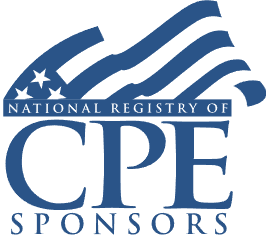Estates, IRAs, RMDs, and Beneficiaries: See-Through Trusts, Inherited IRAs, Roth Conversions, and the SECURE Act

Course Details
- smart_display Format
On-Demand
- signal_cellular_alt Difficulty Level
Intermediate
- work Practice Area
Tax Preparer
- event Date
Thursday, November 21, 2019
- schedule Time
1:00 PM E.T.
- timer Program Length
110 minutes
-
BARBRI is a NASBA CPE sponsor and this 110-minute webinar is accredited for 2.0 CPE credits.
-
BARBRI is an IRS-approved continuing education provider offering certified courses for Enrolled Agents (EA) and Tax Return Preparers (RTRP).
-
Live Online
On Demand
This course will discuss necessary considerations when naming the beneficiaries of IRAs, as well as how to determine applicable beneficiaries, distribution periods, and amounts for RMDs for inherited retirement accounts. The panelist will cover spousal beneficiaries, non-spousal beneficiaries, conduit and accumulation trusts, Roth IRAs, and the impact of the Secure Act on IRA planning.
Description
In bankruptcy, inherited non-spousal IRAs may not be protected from creditors. IRAs without a designated beneficiary are required to be distributed within five years of the owner's death if the owner was under the age of 70½. Giving a portion of an IRA trust to a charity can accelerate the taxation of the distribution. Naming a beneficiary is critical to lessen the tax burden on inherited IRAs.
Some beneficiaries may be too young to be competent beneficiaries. Establishing a see-through trust can be a viable alternative; however, specific trust criteria must be met to obtain favorable tax treatment, distribution over the life expectancy of the eldest heir. Trust tax brackets are high, with amounts over $12,500 taxed at 37% in 2018. Trust taxation brackets may be avoided by naming your child as a beneficiary. However, children under age 19 (24 if a full-time student) are subject to the kiddie tax on unearned income above $2,200 (in 2019) and the same high tax brackets.
The naming of the beneficiary and the timing of the RMDs after death are critical. IRAs can have separate beneficiaries with separate life expectancies and RMD requirements. For trust beneficiaries, this is not necessarily so. The determination of the beneficiary and calculations of required distributions are complex. Late and neglected RMDs are subject to a 50% excise tax.
Listen as Leon LaBrecque, JD, CPA, CFP, CFA, Chief Growth Officer of Sequoia Financial Advisors explains inherited IRAs, including RMD calculations, determining beneficiaries, and how the proposed SECURE Act impacts retirement planning. Understanding the implications of a taxpayer's named beneficiaries and identifying the implications of subsequent tax distributions is essential for CPAs, tax advisers, and preparers.
Outline
- Spousal beneficiaries
- Non-spouse IRA beneficiaries
- RMDs and taxation of withdrawals
- Trusts as IRA beneficiaries
- IRA trusts
- RMDs and taxation of withdrawals
- Roth IRAs
- New strategies--The SECURE Act
Benefits
The panelist will review these and other important issues:
- What are the tax considerations of naming a trust as beneficiary?
- What are the requirements for a see-through trust?
- How are RMDs calculated for individual and trust beneficiaries?
- How will the SECURE Act affect stretch distributions?
NASBA Details
Learning Objectives
After completing this course, you will be able to:
- Identify trust beneficiaries
- Determine the impact of the SECURE Act on stretch IRAs
- Ascertain when a taxpayer should consider converting a traditional IRA to a ROTH
- Decide between a trust and an outright beneficiary designation
- Field of Study: Taxes
- Level of Knowledge: Intermediate
- Advance Preparation: None
- Teaching Method: Seminar/Lecture
- Delivery Method: Group-Internet (via computer)
- Attendance Monitoring Method: Attendance is monitored electronically via a participant's PIN and through a series of attendance verification prompts displayed throughout the program
- Prerequisite: Three years+ business or public firm experience preparing complex tax forms and schedules, supervising other preparers or accountants. Specific knowledge and understanding of pass-through taxation, including taxation of partnerships, S corporations and sole proprietorships, qualified business income, net operating losses and loss limitations; familiarity with net operating loss carry-backs, carry-forwards and carried interests.

Strafford Publications, Inc. is registered with the National Association of State Boards of Accountancy (NASBA) as a sponsor of continuing professional education on the National Registry of CPE Sponsors. State boards of Accountancy have final authority on the acceptance of individual courses for CPE Credits. Complaints regarding registered sponsons may be submitted to NASBA through its website: www.nasbaregistry.org.

Strafford is an IRS-approved continuing education provider offering certified courses for Enrolled Agents (EA) and Tax Return Preparers (RTRP).
Unlimited access to premium CLE courses:
- Annual access
- Available live and on-demand
- Best for attorneys and legal professionals
Unlimited access to premium CPE courses.:
- Annual access
- Available live and on-demand
- Best for CPAs and tax professionals
Unlimited access to premium CLE, CPE, Professional Skills and Practice-Ready courses.:
- Annual access
- Available live and on-demand
- Best for legal, accounting, and tax professionals
Unlimited access to Professional Skills and Practice-Ready courses:
- Annual access
- Available on-demand
- Best for new attorneys
Related Courses
Recommended Resources
How CPE Can Bridge the Gap Between What You Know and What You Need to Know
- Career Advancement
